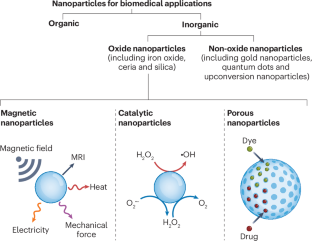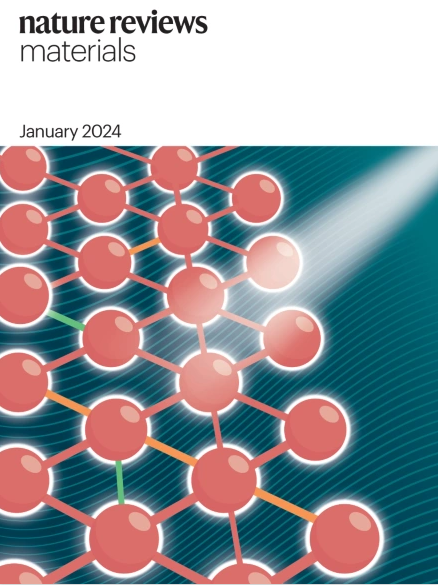Design of oxide nanoparticles for biomedical applications
IF 86.2
1区 材料科学
Q1 MATERIALS SCIENCE, MULTIDISCIPLINARY
引用次数: 0
Abstract
Oxide nanoparticles have garnered significant attention in biomedical research owing to the numerous available synthetic approaches and highly tunable physicochemical properties, which enable diverse functions within biological systems. These nanoparticles can be broadly categorized based on their characteristics useful for biomedical applications. Magnetic oxide nanoparticles, for instance, are prominently used as contrast agents in MRI and as mediators to generate heat, mechanical force or electricity for therapy. Catalytic oxide nanoparticles can generate or eliminate reactive oxygen species, which are central to numerous biological processes. Porous oxide nanoparticles are adept at loading dye or drug molecules, making them invaluable for bioimaging and therapeutic interventions. In this Review, we highlight strategies for the fabrication and advanced engineering of oxide nanoparticles tailored for biomedical applications. We primarily focus on iron oxide, ceria and silica nanoparticles, delving into their diagnostic and therapeutic potentials. We also discuss future prospects and the challenges that must be addressed to meet clinical needs. Oxide nanoparticles, particularly iron oxide, ceria and silica nanoparticles, hold significant promise for biomedical applications owing to their unique magnetic, catalytic and porous properties. This Review highlights design strategies for their diagnostic and therapeutic uses and future clinical challenges.


用于生物医学应用的氧化物纳米颗粒的设计
氧化物纳米颗粒在生物医学研究中引起了极大的关注,因为有许多可用的合成方法和高度可调的物理化学性质,使生物系统中的多种功能成为可能。这些纳米颗粒可以根据其生物医学应用的特性大致分类。例如,磁性氧化物纳米颗粒在核磁共振成像中主要用作造影剂,并作为产生热、机械力或治疗用电的介质。催化氧化物纳米颗粒可以产生或消除活性氧,这是许多生物过程的核心。多孔氧化物纳米颗粒擅长装载染料或药物分子,使其成为生物成像和治疗干预的宝贵资源。在这篇综述中,我们重点介绍了为生物医学应用量身定制的氧化纳米颗粒的制造和先进工程技术。我们主要专注于氧化铁,二氧化铈和二氧化硅纳米颗粒,深入研究其诊断和治疗潜力。我们还讨论了未来的前景和必须解决的挑战,以满足临床需求。
本文章由计算机程序翻译,如有差异,请以英文原文为准。
求助全文
约1分钟内获得全文
求助全文
来源期刊

Nature Reviews Materials
Materials Science-Biomaterials
CiteScore
119.40
自引率
0.40%
发文量
107
期刊介绍:
Nature Reviews Materials is an online-only journal that is published weekly. It covers a wide range of scientific disciplines within materials science. The journal includes Reviews, Perspectives, and Comments.
Nature Reviews Materials focuses on various aspects of materials science, including the making, measuring, modelling, and manufacturing of materials. It examines the entire process of materials science, from laboratory discovery to the development of functional devices.
 求助内容:
求助内容: 应助结果提醒方式:
应助结果提醒方式:


